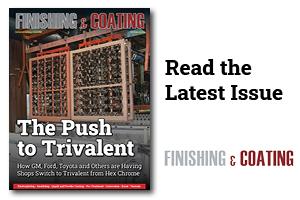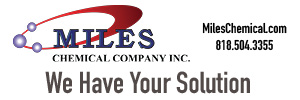Christopher Camp described it as “giving employees a voice.” Jeff Stone says, “It changed the entire direction of where we were going” as a company.
 Mark BurgerMario Sanchez estimates that “50% of the time, you can come up with a solution to a problem at that moment, which means success.” Carrie Tippett says it’s about sending a message to employees that “ what you're doing is going help make their day better and not worse.”
Mark BurgerMario Sanchez estimates that “50% of the time, you can come up with a solution to a problem at that moment, which means success.” Carrie Tippett says it’s about sending a message to employees that “ what you're doing is going help make their day better and not worse.”
All four KC Jones Plating managers report that implementing routine workplace walkthroughs, known as “Gemba Walks,” has successfully resolved operational issues quickly and more effectively.
It is a process where managers and supervisors walk the shop floor to visit areas or matters that either employees have raised issues about or where data shows a potential production or quality problem.
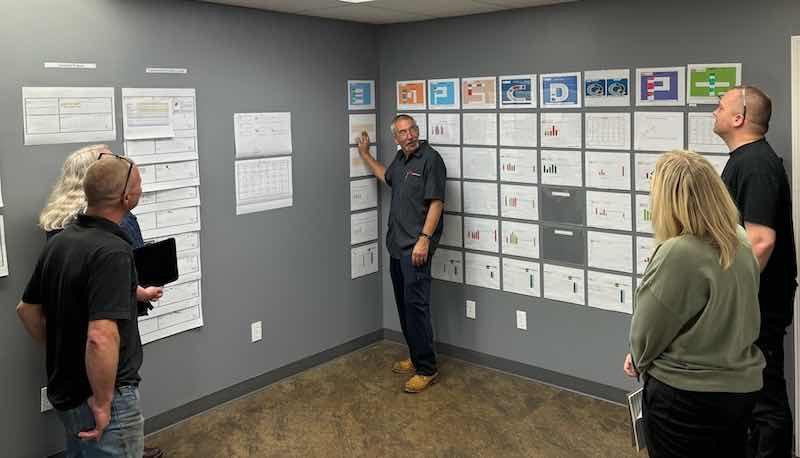 KC Jones Plating staff have a daily review of its KPIs to understand the health of the plant for the prior day.
KC Jones Plating staff have a daily review of its KPIs to understand the health of the plant for the prior day.
Place Where Value is Created
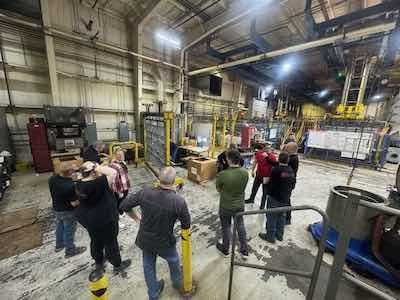 KC Jones Plating also uses Kaizen training, as it did at its Indiana plant.The term Gemba is Japanese and means “the real place.” It is also known as “the place where value is created,” and Camp says that the production floor is the most valuable space in any of KC Jones Plating’s facilities.
KC Jones Plating also uses Kaizen training, as it did at its Indiana plant.The term Gemba is Japanese and means “the real place.” It is also known as “the place where value is created,” and Camp says that the production floor is the most valuable space in any of KC Jones Plating’s facilities.
“Gemba is going to the place in the factory where value is added to the product,” says Camp, Plant Manager at KC Jones Plating Indiana. “I'm in administration, so we go to where the source of the value is added, and that is the shop floor.”
Each KC Jones Plating facility has been integrating the Gemba Walks into its operations over the past year and a half. Some facilities perform it daily and weekly, while other departments do it on a monthly schedule, depending on any issues present.
Mark Burger, President of KC Jones Plating Company, says the quality practice has been instrumental in increasing productivity and customer satisfaction.
“Over the past two years, we’ve been evolving our leadership team, and the additions of Mario, Carrie, and Chris have elevated our ability to execute real, lasting improvements,” Burger says. “With strong leaders in place, initiatives like Gemba Walks gain traction because they’re driven by people who believe in listening, engaging, and acting.”
 Jeff StoneBurger says that Stone — the Vice President of Operations — has helped align their plants to work as one team, but it’s their local leaders who are making the difference by being present on the floor and involving their teams in every step of the change.
Jeff StoneBurger says that Stone — the Vice President of Operations — has helped align their plants to work as one team, but it’s their local leaders who are making the difference by being present on the floor and involving their teams in every step of the change.
“For me, it’s been refreshing to take a step back and watch our experts lead,” Burger says. “After our first Gemba in Indiana this year, I heard directly from employees who told me they’ve never felt so included. Their message was clear: we’re growing, we’re supporting each other, and we’re pushing forward together. That’s what great leadership looks like.”
Sanchez, General Manager of KC Jones Plating Mexico, introduced the Gemba Walks to the KC Jones Plating management and operations team. He has extensive experience in Six Sigma and Lean management operations, which he has integrated since joining the company in 2023.
“We changed the direction of where we were going and what we thought were problems. By doing these Gembas regularly, you find out that you may need to collect different data, or when you get an explanation, you learn much more.”
 Mario SanchezIn simple terms, Sanchez says a Gemba Walk is about observing how a process is performed and speaking with those who perform the job to identify better ways to do it.
Mario SanchezIn simple terms, Sanchez says a Gemba Walk is about observing how a process is performed and speaking with those who perform the job to identify better ways to do it.
“I’ve been in the industry for almost 35 years, and I have seen how effective this is when it was utilized with the past companies I’ve worked for,” he says. “ In our manager's meeting, we review the Key Performance Indicators (KPI), and if something is wrong — and it can be quality, safety, or maintenance — we all go to that specific area and look at what's going on. We look for ways it can be resolved, and we asked, ‘What can we do to help?’”
Several Ways to Solve Problems
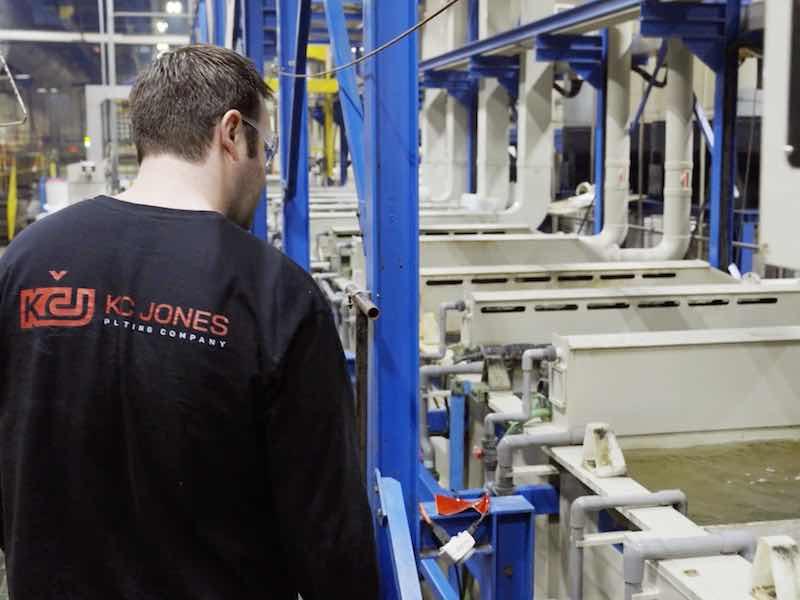 KC Jones Plating offers a variety of finishes, but specializes in zinc, zinc-nickel, zinc-iron, and electroless nickel finishes.Camp, the Plant Manager at the Indiana facility, had similar training before starting at KC Jones Plating in December 2024. His previous employer, the world’s largest manufacturer of braking systems, used a variation of Toyota’s production quality programs. He adds that most quality programs originated with Toyota’s manufacturing principles.
KC Jones Plating offers a variety of finishes, but specializes in zinc, zinc-nickel, zinc-iron, and electroless nickel finishes.Camp, the Plant Manager at the Indiana facility, had similar training before starting at KC Jones Plating in December 2024. His previous employer, the world’s largest manufacturer of braking systems, used a variation of Toyota’s production quality programs. He adds that most quality programs originated with Toyota’s manufacturing principles.
“ There's two ways to attack a Gemba Walk,” Camp says. “It can be the daily monitoring of KPIs, directing your conversation toward a specific part or process in the plant. The other is called ‘Attacking the Big Six,’ a more structured ritual. Every month, we go to the floor and audit people, safety, quality, production, and equipment.”
“The Big Six” are production losses attributed to six events: unplanned stops, planned stops, small stops, slow cycles, production rejects, and startup rejects. KC Jones Plating also employs Kaizen events, another quality improvement tool where all levels of the company work together proactively to achieve regular, incremental improvements to the manufacturing process.
 Christopher CampStone says the Gemba Walks have been very useful since Camp and Sanchez helped integrate them into the quality program.
Christopher CampStone says the Gemba Walks have been very useful since Camp and Sanchez helped integrate them into the quality program.
”We had some surprises in our Gemba Walk for a Kaizen event where we learned a lot of things going to the floor,” he says. “During the Gemba Walk for that one, we changed the direction of where we were going and what we thought were problems. In an administration, we all look at data, and we make inferences from that data. And sometimes, by doing these Gembas regularly, you find out that you may need to collect different data, or when you get an explanation, you learn much more.”
 Carrie TippettTippett, the Plant Manager at the KC Jones Plating Hazel Park, MI, location, says she has been involved with quality walks for about nine years, having joined KCJ only one year ago. She says she wasn’t sold on the idea when it began at her previous employer.
Carrie TippettTippett, the Plant Manager at the KC Jones Plating Hazel Park, MI, location, says she has been involved with quality walks for about nine years, having joined KCJ only one year ago. She says she wasn’t sold on the idea when it began at her previous employer.
”At my previous job, I was very skeptical only because it was something I had never really heard of before,” Tippett says. “The gentleman who explained it did not give a full explanation of what was going to do, but what it boiled down to was getting out on the floor. Then it all made sense to me, and they had me in hook, line, and sinker.”
Yielding a Surprising Number of Results
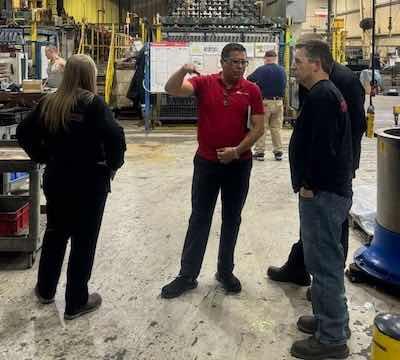 Camp says a Gemba Walk usually takes about 45 minutes but yields surprising results. He says that combining walkthroughs of the production plant with an examination of Big Six issues is starting to show improvements.
Camp says a Gemba Walk usually takes about 45 minutes but yields surprising results. He says that combining walkthroughs of the production plant with an examination of Big Six issues is starting to show improvements.
“ For example, under the ‘people’ category, is the lead ritual in the shift handoff forms being utilized? Are we communicating and developing the people?” he says. “We are going to audit their performance to the standardized work to make sure that we're providing the product that we promise, and then we need to interview the employees and see if they need any support.”
Going forward, Camp says that one of the plant leaders will be assigned to a specific sector of the facility and will conduct an audit. That audit will typically take 45 minutes to an hour, and they are developing a template to capture the Big Six when those leaders reconvene.
“Because the plants can be divided into quadrants, and we're going to look for similarities on issues that we need to address as a whole,” Camp says. “If there are small gaps in some of the quadrants, the team leads will address them once we've identified them. However, if there are any, we are trying to determine if there is anything holistically or systematically that we need to address as an entire location, not just as a quadrant. We're looking for patterns we can improve and things we need to make a bit more robust.”
”The approach I take when I'm working on a line or working on a process is getting back to the basics.”
Stone, Sanchez, and Camp all agree that the result will be to resolve issues that employees may be having on the floor and make improvements quickly to make it easier for staff to perform their functions.
“It truly does give the employees a voice,” Camp says. “They may think that we're not approachable at any given time, but they do know that for that hour every month, we're solely focused on their issues to support them and help them win.”
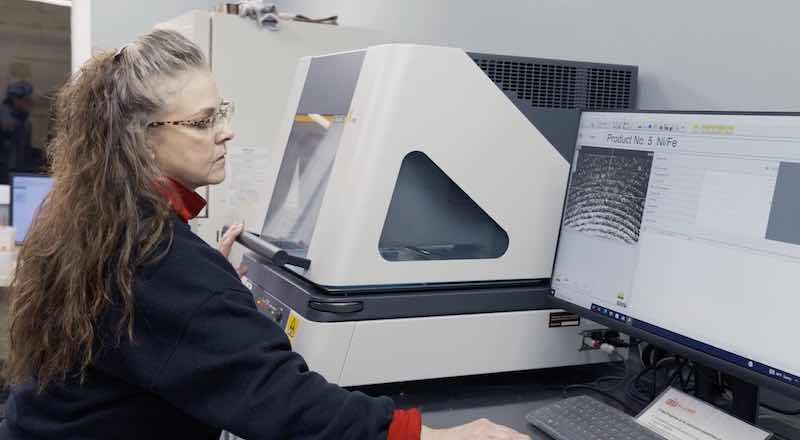 KC Jones Plating has long had an emphasis on quality in its operations.
KC Jones Plating has long had an emphasis on quality in its operations.
A Fresh Look Eliminates Waste and Rejects
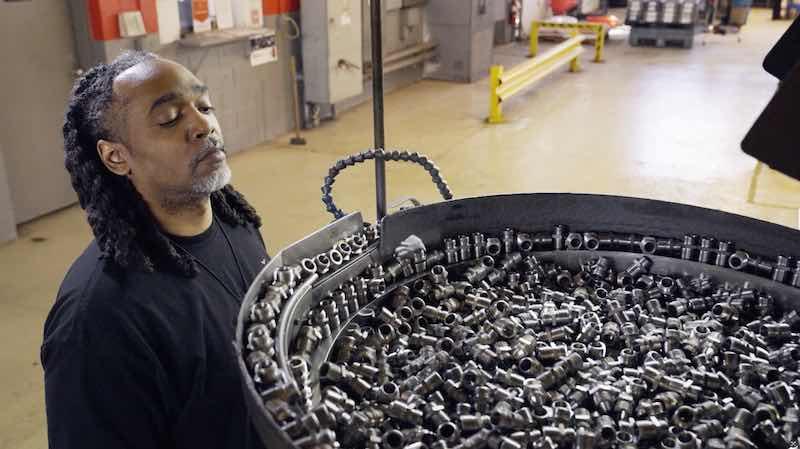 Tippett says the goal is to eliminate some of the eight forms of waste and their production lines running the most efficiently as they can, not only from a throughput standpoint but from a quality standpoint as well.
Tippett says the goal is to eliminate some of the eight forms of waste and their production lines running the most efficiently as they can, not only from a throughput standpoint but from a quality standpoint as well.
As an example, she says they were able to work with employees on one of the production lines and improve efficiencies so much that they reduced the number of shifts from three a day and nine employees to running two shifts each day with four employees in total.
”The approach I take when I'm working on a line or working on a process is getting back to the basics,” Tippett says. “What you typically find is that the programs and the processes were set up in the beginning and set up to be run correctly. But throughout time and change of leadership, change of supervision, the processes are changed to mimic the habits of the employees.”
She says that instead of keeping employees accountable, she prefers to return to the basics and see if that improves quality and production. In the case of the production line, Tippett had been there just six months when she decided to use the Gemba program on the line to help improve efficiencies.
“It was about walking the steps with the operators. What we found is that they were adding extra movement that was just not necessary.”
“This line is one of our highest production lines, and we were spending a lot of money on it,” she says. “We needed to figure out how we get some of the labor out of it and some of the quality rejects out of it.”
Tippett did a time study and watched the employees working the line. She also spoke to one of the employees and one of the lead operators on the first shift to discuss the issues.
“I asked them to tell me what they were doing and why they were doing it, and on over half of the steps, they couldn’t even explain why they were doing it a certain way,” Tippett says. “It was, ‘That's how we’ve always done it.’”
Changing a Culture Through Efficiencies
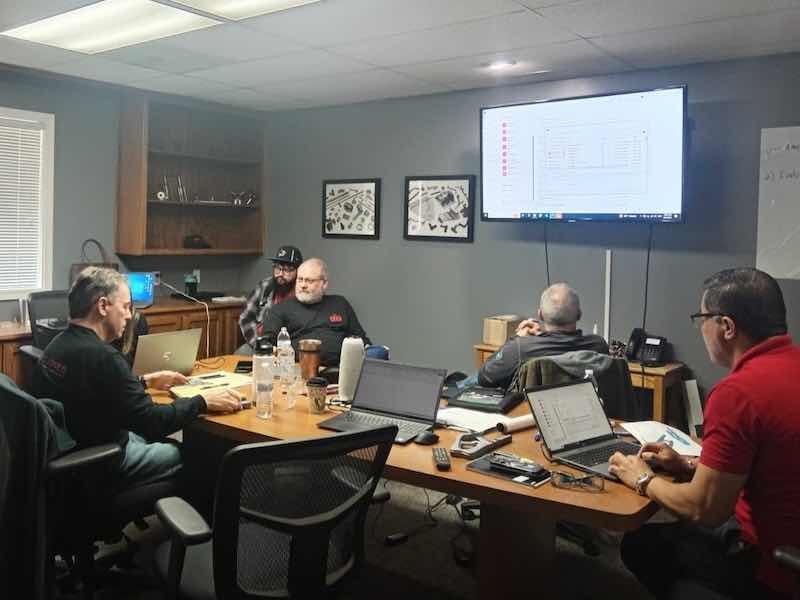 The Indiana location of KC Jones Plating held a Kaizen quality event to improve overall operations. When she started the Gemba on the line in July 2024, the line had rejected 22 barrel loads of parts that required rework, resulting in a 0.045% reject rate. For Tippett, that was simply way too much and way too costly, and above the company’s KPI rework allowance.
The Indiana location of KC Jones Plating held a Kaizen quality event to improve overall operations. When she started the Gemba on the line in July 2024, the line had rejected 22 barrel loads of parts that required rework, resulting in a 0.045% reject rate. For Tippett, that was simply way too much and way too costly, and above the company’s KPI rework allowance.
“In my terms, when a part needs rework, it costs three and a half times the original price to reproduce it, including labor, chemicals, and lost productivity,” Tippett says. “It was important to eliminate all of the noise from that area and the operators focusing on exactly what they should be doing.”
By October 2024, just three months after making some changes and eliminating others, they had rejected a total of five barrels from that line, reducing the reject rate to 0.01%.
“We started with a 5S of the area and pulling things out that were in their way,” Tippet says. “It was about walking the steps with the operators. What we found is that they were adding extra movement that was just not necessary.”
Tippett says caution needs to be taken to ensure employees have a clear understanding of the purpose of Gemba walks before changes are implemented.
“ I have found in my experience that when a company starts to change a culture and starts implementing the 5S and Gemba walks, typically the first thing out of the employee's mouth is, ‘They are just trying to get rid of us,’” she says. “At the end of the day, that's not the case. I'm fortunate enough to have started my career as just an operator on the floor early on. I understand from an operator standpoint what they're looking for, and all they want to know is that they're heard. And that what you're doing is going help make their day better and not worse.”
Visit https://kcjplating.com.






